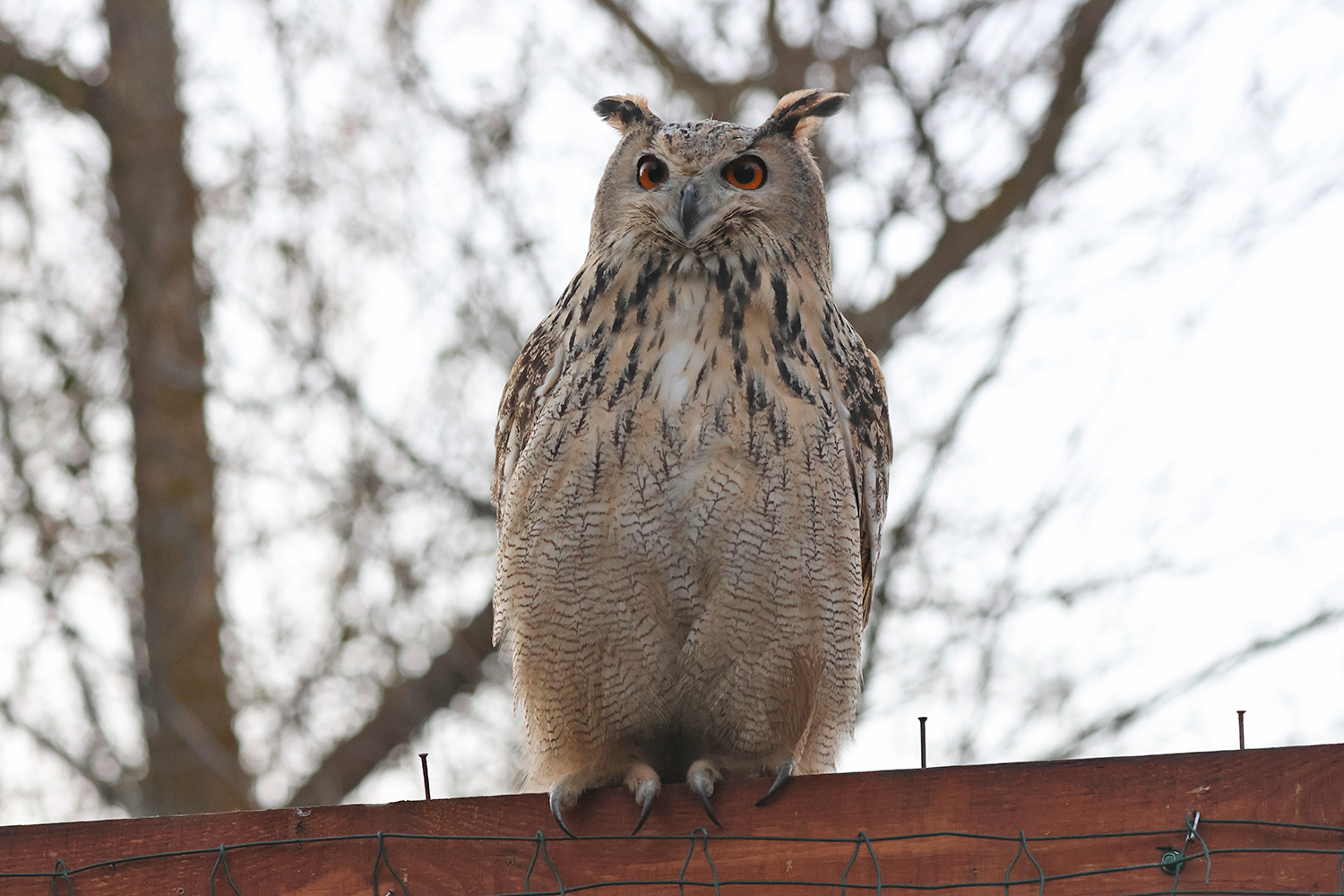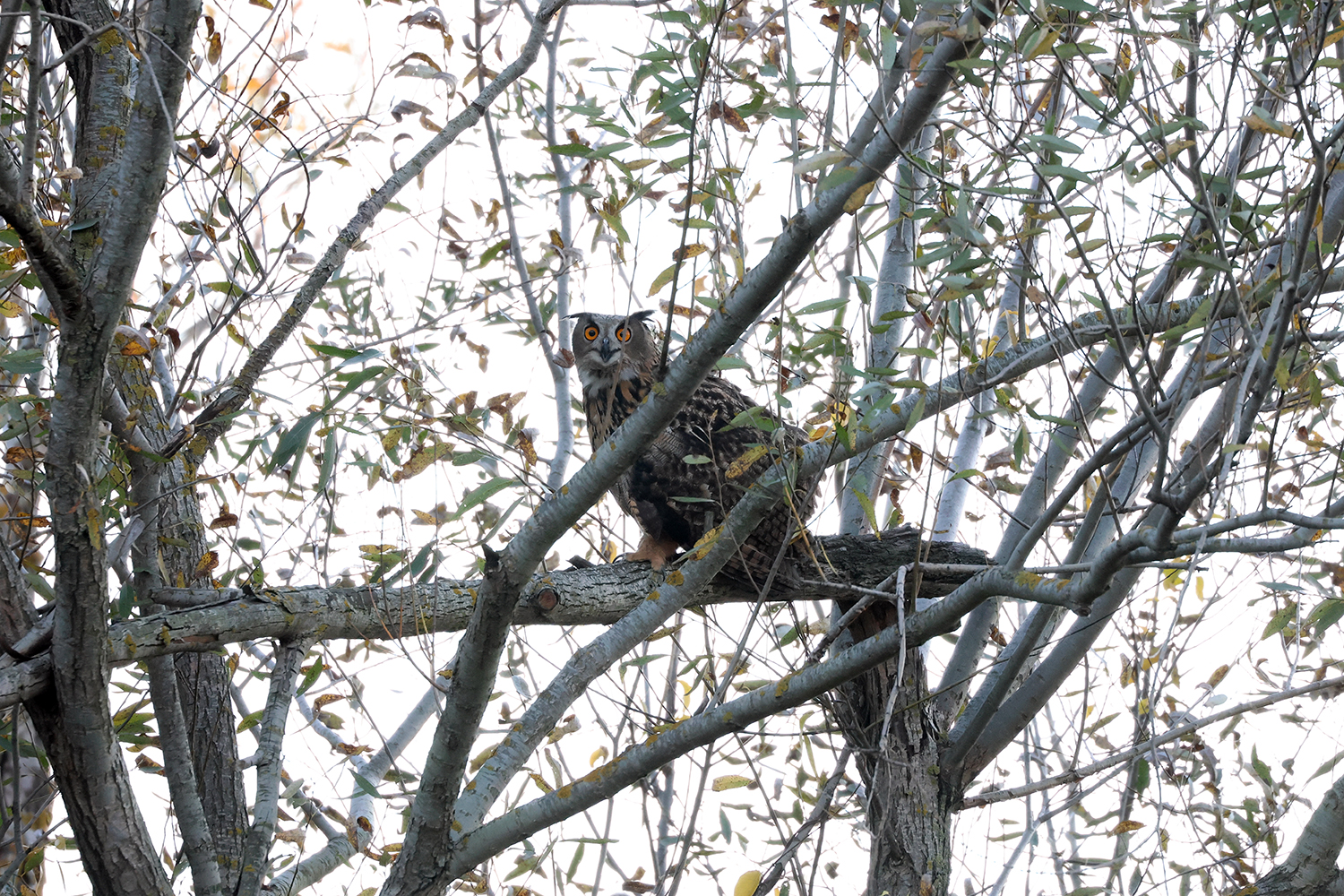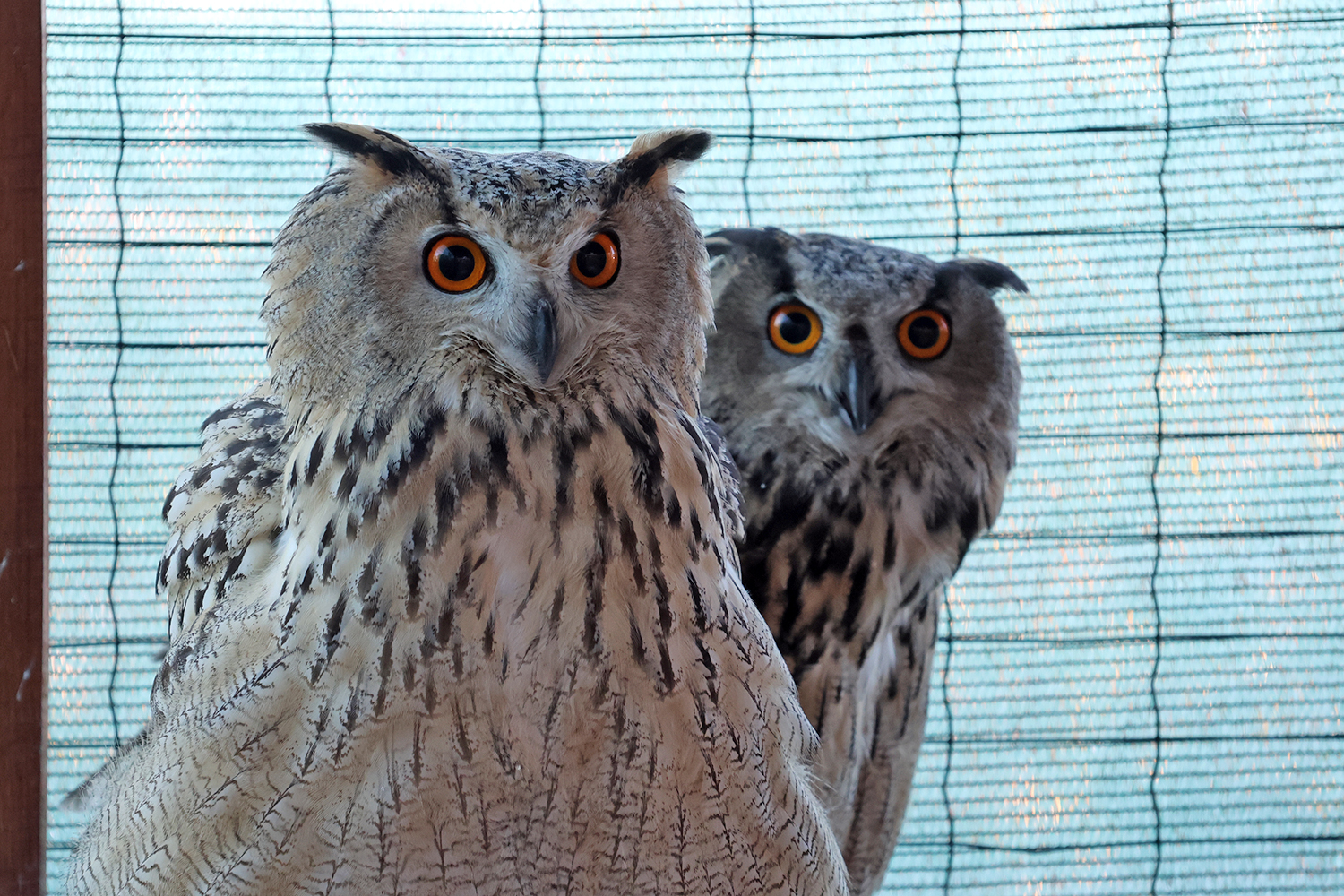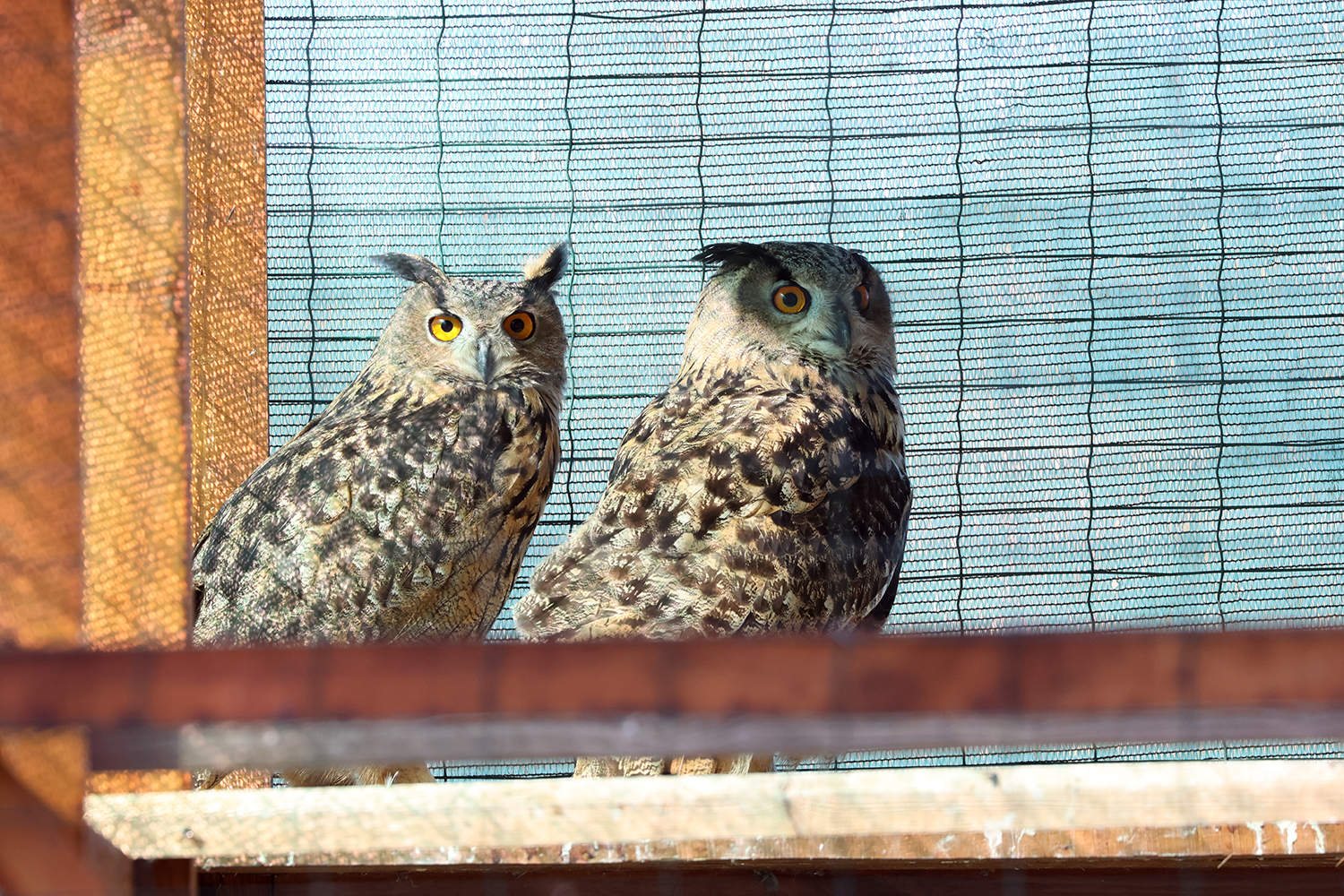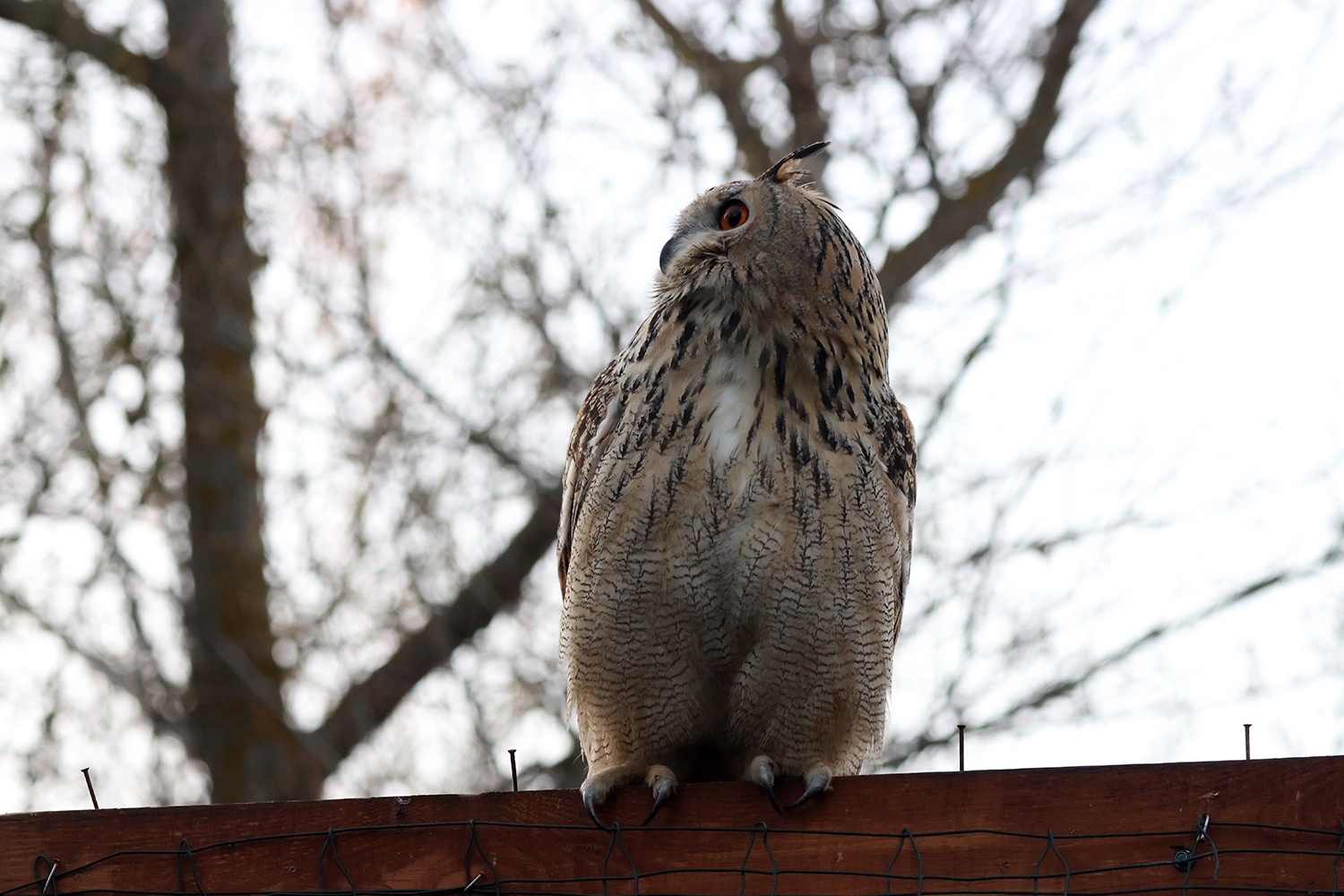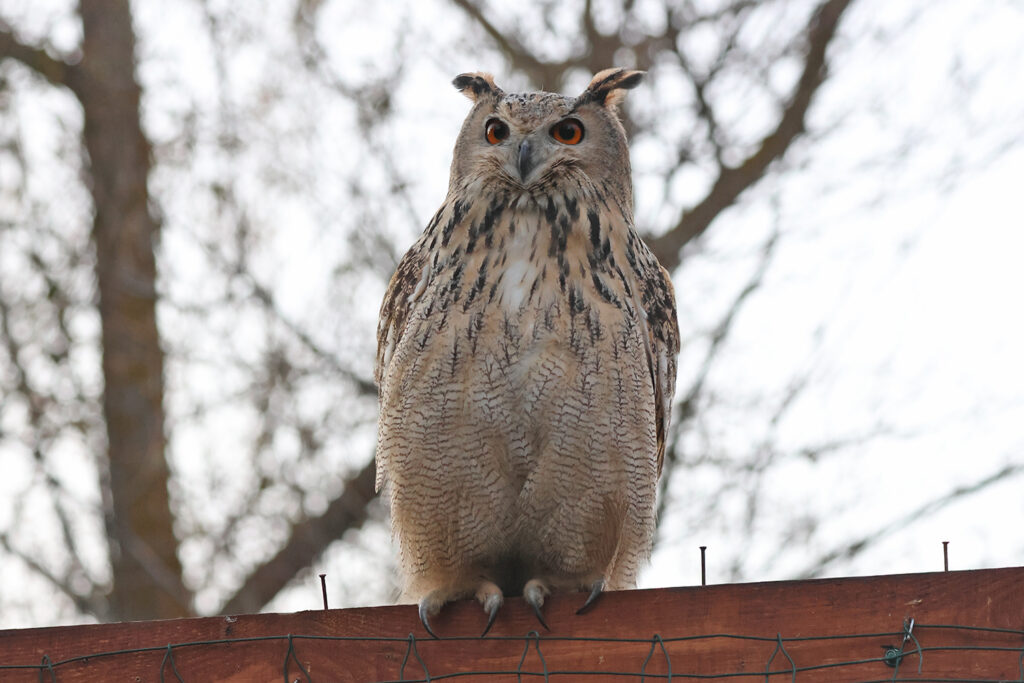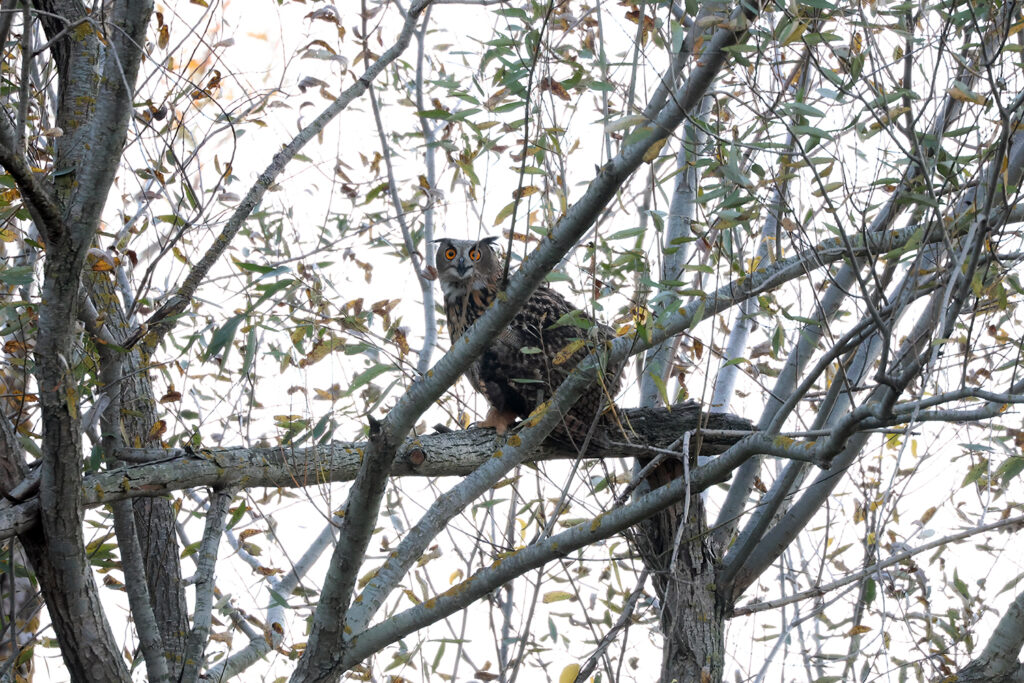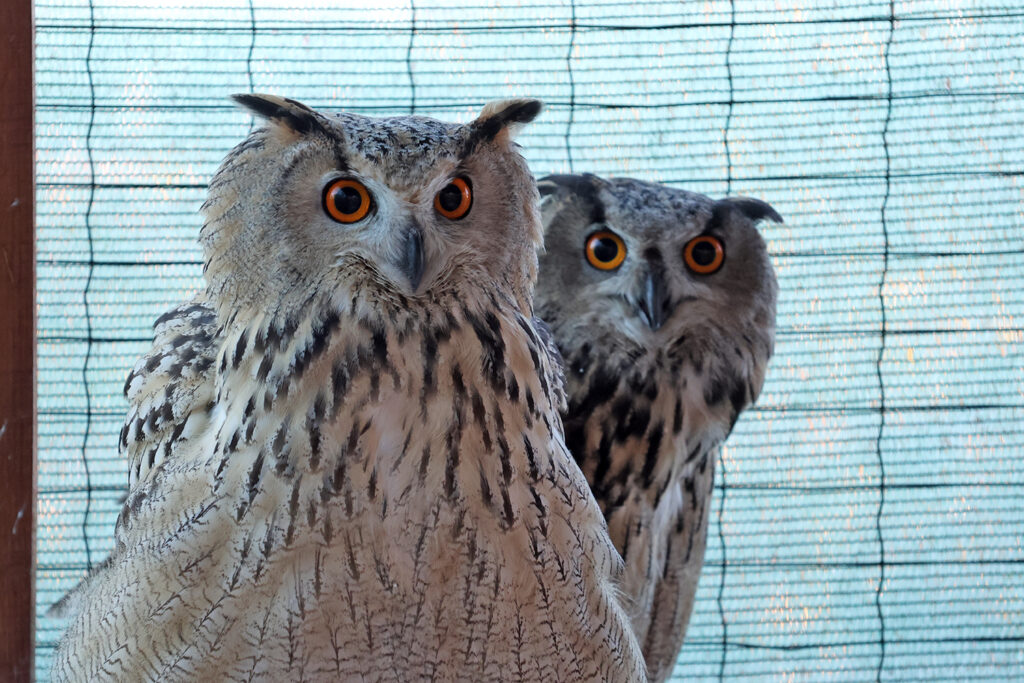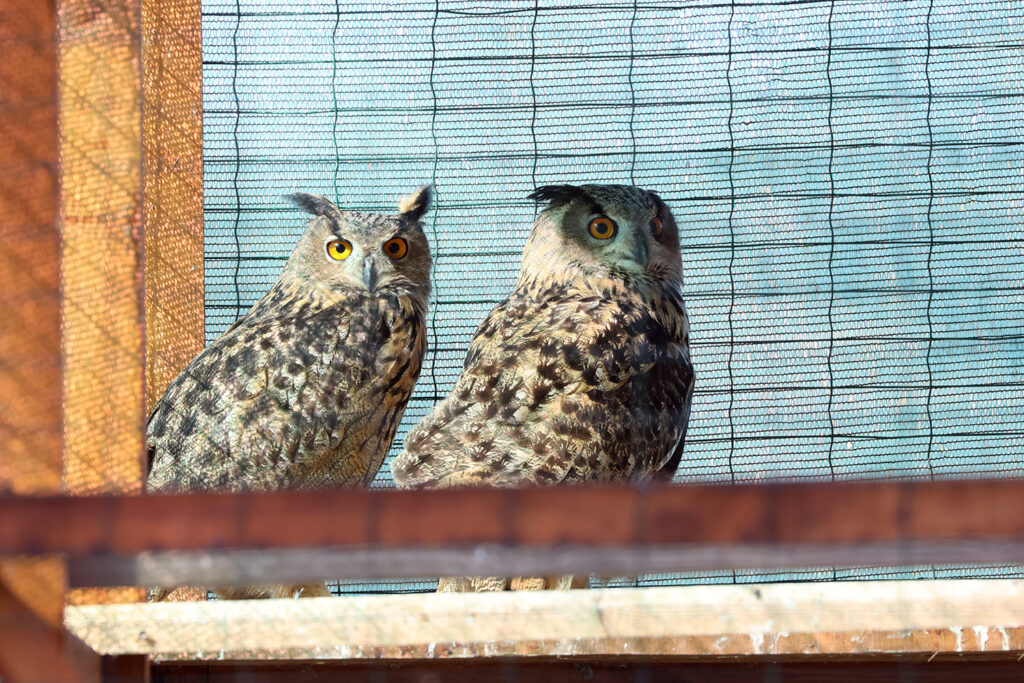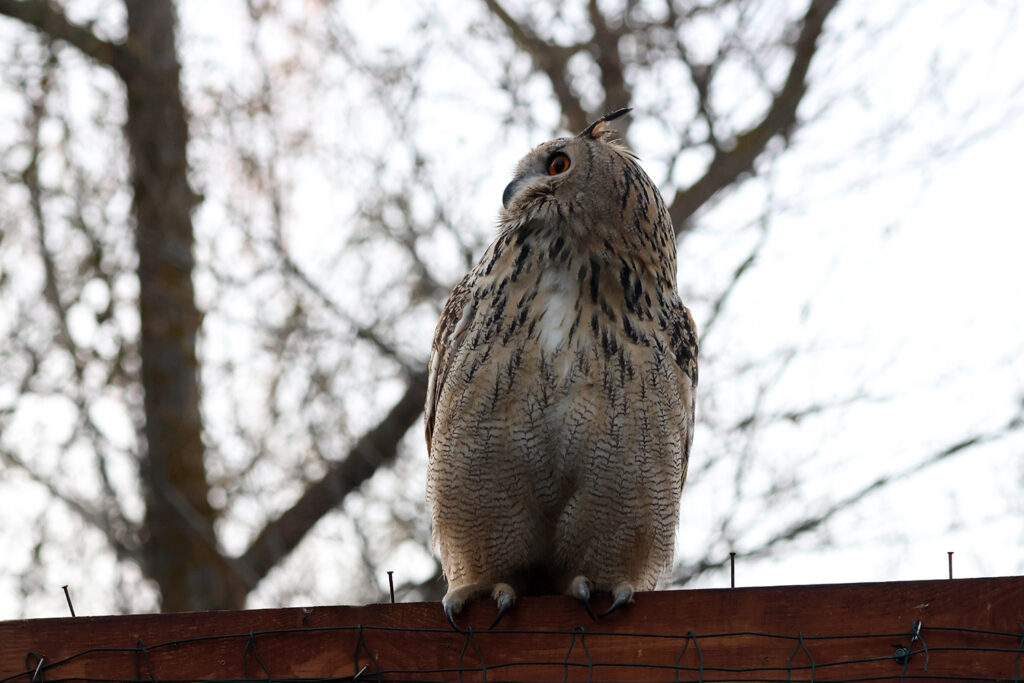The night sky over the Danube once again resonates with the call of Europe’s largest owl – the Eurasian eagle owl (Bubo bubo). Four young birds – two males and two females – have embarked on their first journey into the wild as part of Rewilding Ukraine’s ongoing programme to restore this iconic species in the Danube Delta.
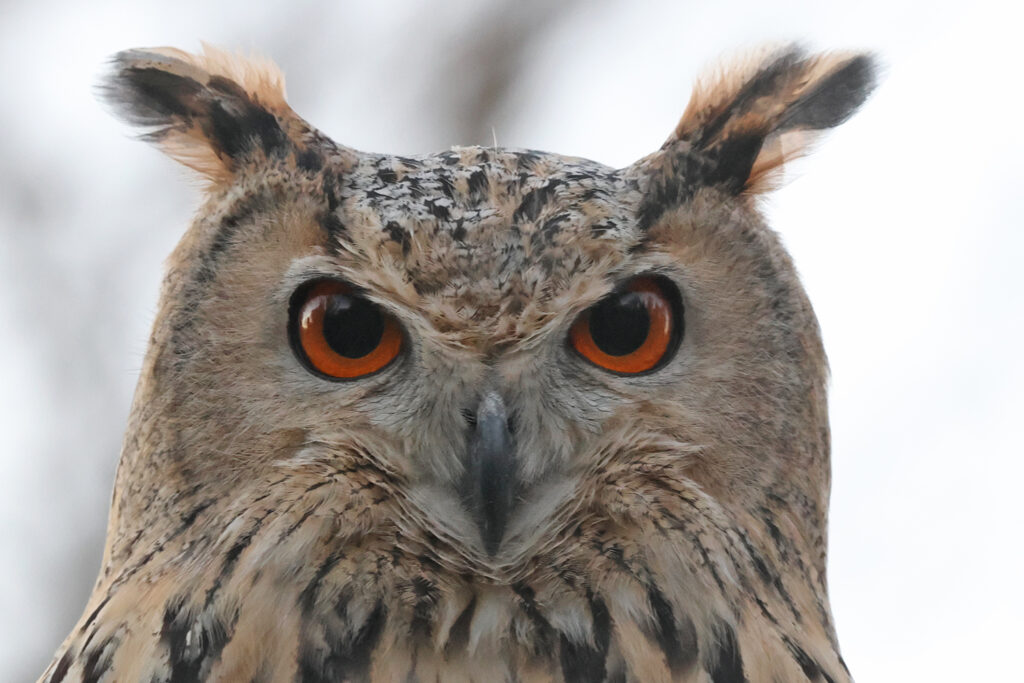
This marks another step in establishing a viable local population of eagle owls in a region where the species nearly disappeared during the 20th century. Nineteen owls have now been released through the programme, and work continues, with further releases and ongoing monitoring planned.
Path into the wild
All four new residents of the delta were born at Limpopo Zoo in the Lviv region. After hatching, the birds underwent several stages of preparation for independent life, the final one taking place at Odessa Zoo. There, the owls learned to fly and hunt on their own.
Before release, the birds were transferred to an adaptation enclosure located near the Pelican eco-tourism complex in Vylkove, at the heart of the Ukrainian part of the Danube Delta. They spent about two weeks there, acclimatising to the sounds of the wind, the scent of reeds, and the nocturnal sounds of the wild – a world that would now become their home.

Two of the owls were fitted with GPS transmitters, allowing the Rewilding Ukraine team to monitor their behaviour and movements. Previous years of tracking have shown that released juveniles actively explore the wider Ukrainian Danube region but eventually return to the delta, where they find shelter and sufficient food even during winter.
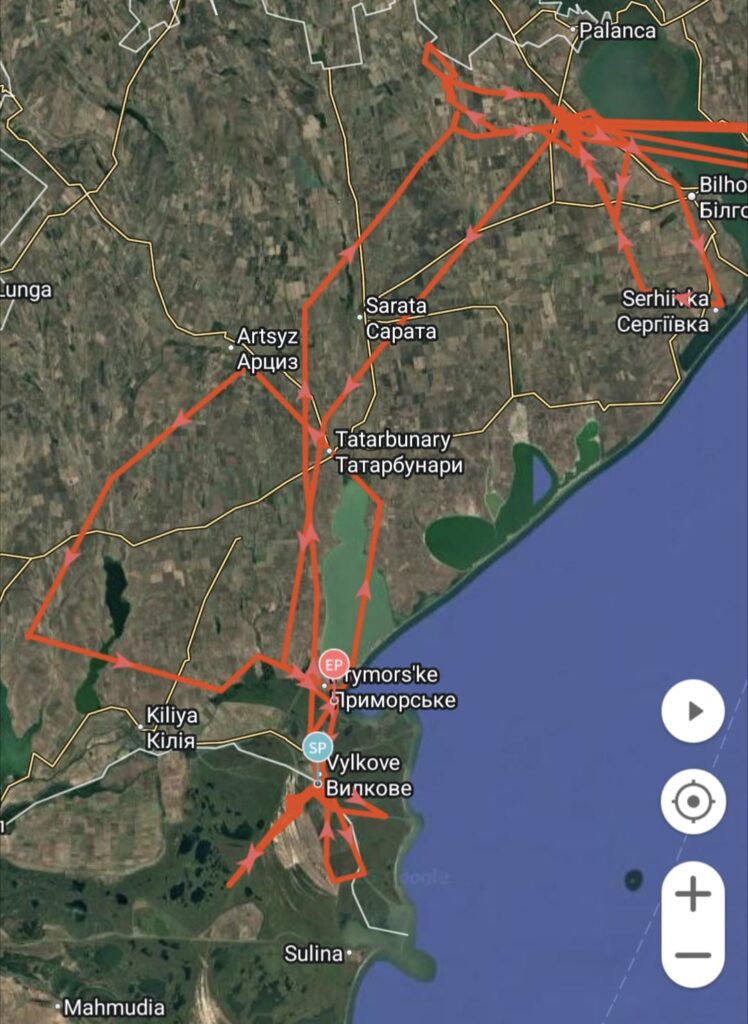
Restoring a healthy Delta Landscape
As apex predators, eagle owls play a crucial role in maintaining the health of the delta ecosystem. They help control rodent populations, particularly rats, which can damage the nests of other bird species. Where eagle owls return, natural ecological processes regain balance.
These owls also hold cultural significance, featuring prominently in folk tales, legends, and songs. Their presence in the delta strengthens both nature and the local communities, as the restored landscape can attract more visitors and support nature-based livelihoods.
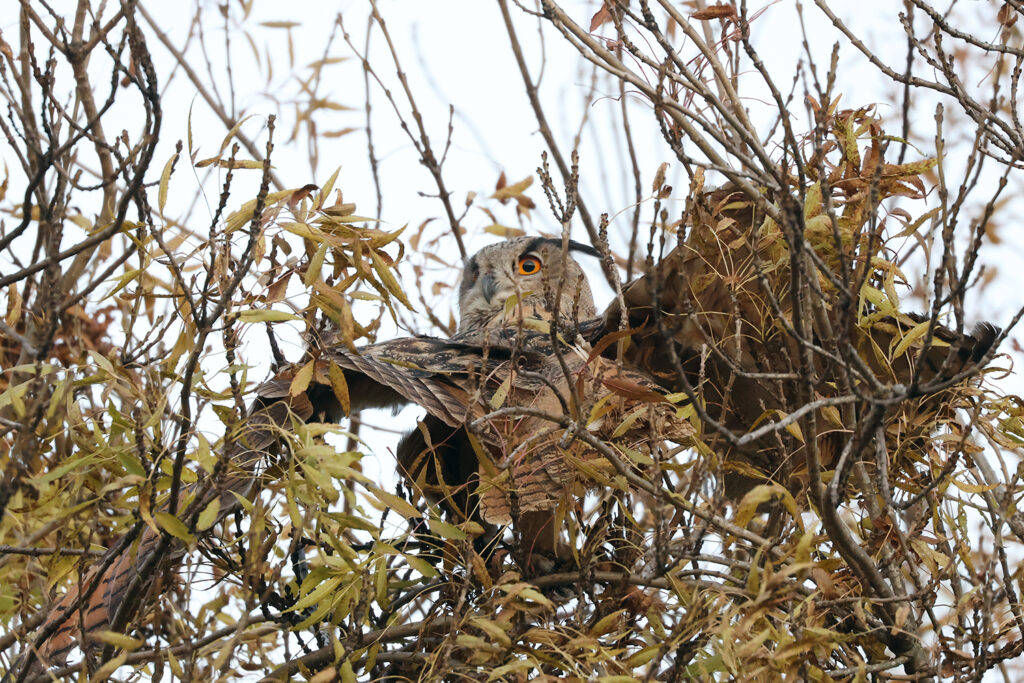
A symbol of resilience
Despite the war, rewilding efforts in the Danube Delta continue. Each release of eagle owls is a symbol of resilience and hope, demonstrating that nature in Ukraine continues to recover even in the most challenging times.
Once, eagle owls had stable populations across Ukraine, but due to persecution, increasing urbanisation, and habitat loss, their numbers sharply declined. Today, thanks to the support of partners including the Danube Biosphere Reserve, Rewilding Europe, and Limpopo Zoo, these iconic birds are returning to areas where their calls can once again echo freely.
Monitoring and hope for the future
“Throughout the implementation of the eagle owl reintroduction initiative in the Ukrainian Danube region, we closely monitor the released birds, both directly with GPS transmitters and using classical ornithological methods and local community surveys. When possible, we also collect supporting data, such as analysing the diet of the owls through their pellets. Our observations and survey results indicate that some birds not only remain in the delta but also thrive here, in both the Ukrainian and Romanian parts of the UNESCO bilateral biosphere reserve. We hope that our efforts will soon confirm breeding of this species in the region and show signs of a growing eagle owl population,” says Oleksandr Haidash, Rewilding Ukraine expert and Researcher at the Danube Biosphere Reserve.
“We hope that our efforts will soon confirm breeding of this species in the region and show signs of a growing eagle owl population.”

Oleksandr Haidash
Rewilding Ukraine expert and Researcher at the Danube Biosphere Reserve
Current status of the eagle owl population
The Eurasian eagle owl (Bubo bubo) is the largest owl in Europe and a key predator in natural ecosystems. While globally the species is not considered threatened (IUCN – Least Concern), local populations are declining in many countries. In Eastern Europe, particularly Ukraine, populations remain stable only in protected areas, while numbers in Polissya and Donbass are limited. In Central Europe (Germany, Poland, Czechia), eagle owls are rare, and in Scandinavia they exist in small, isolated groups. Southern Europe (Spain, Italy, Balkans) mostly hosts stable but isolated populations.
Major threats to eagle owls include nest disturbance, human persecution, pesticide use, loss of natural shelters, and collisions with power lines. This makes population recovery and rewilding programmes essential for ensuring the species’ long-term survival in the wild. The return of eagle owls strengthens food webs, restores ecological balance, and supports local ecosystems. Remarkably, eagle owls can live up to 60 years in the wild, with wingspans reaching 1.8 meters. Their nocturnal hunting makes them highly effective controllers of rodent and small animal populations.
Every release tells a new story of wildlife returning. When eagle owls spread their wide wings over the Danube, the wild landscape takes another step toward recovery.
Invaluable support
Rewilding Europe’s work in the rewilding landscapes is supported by a wide range of highly valued partners. This release was made possible thanks to the Endangered Landscapes & Seascapes Programme, to whom we are very grateful.
